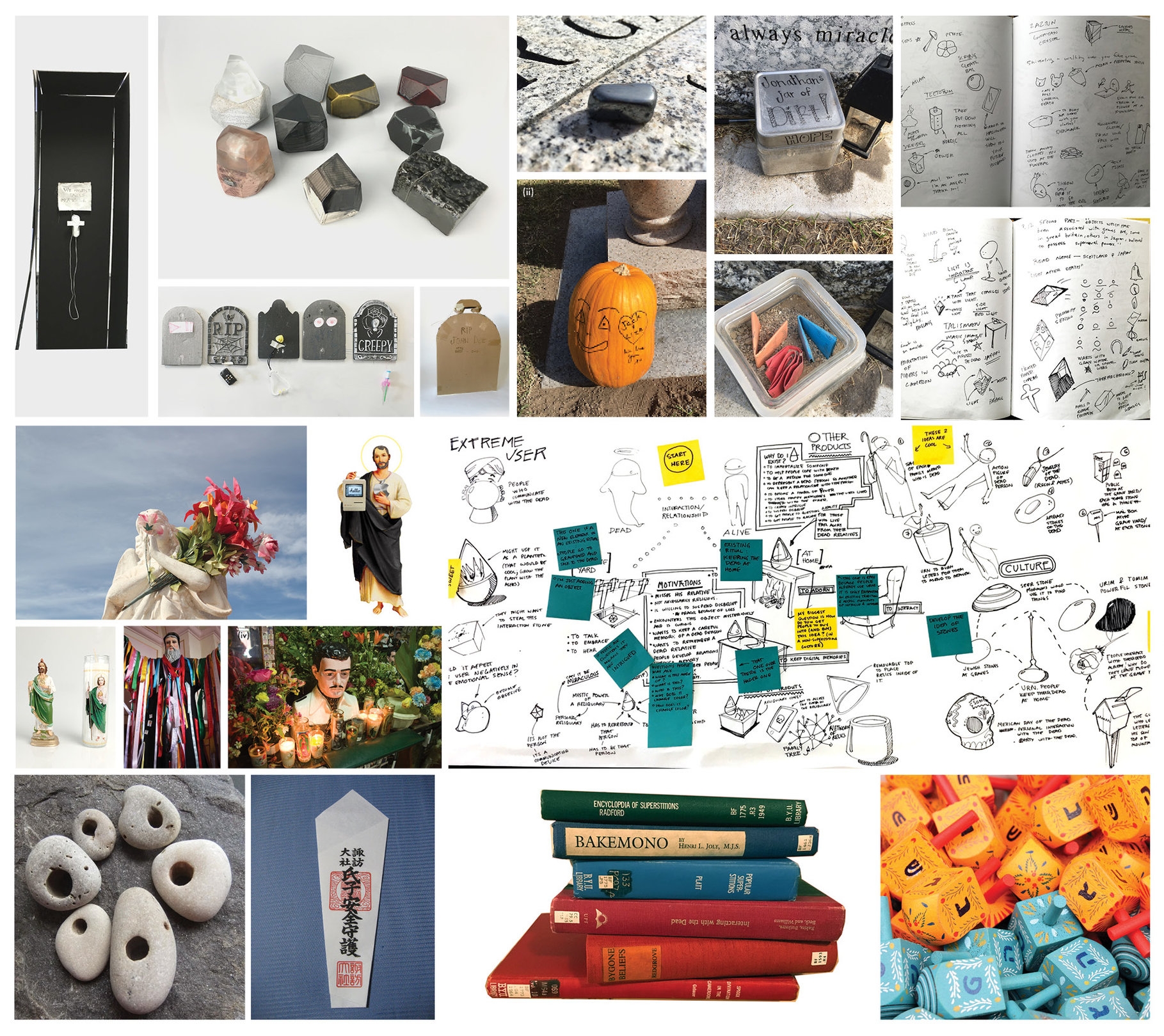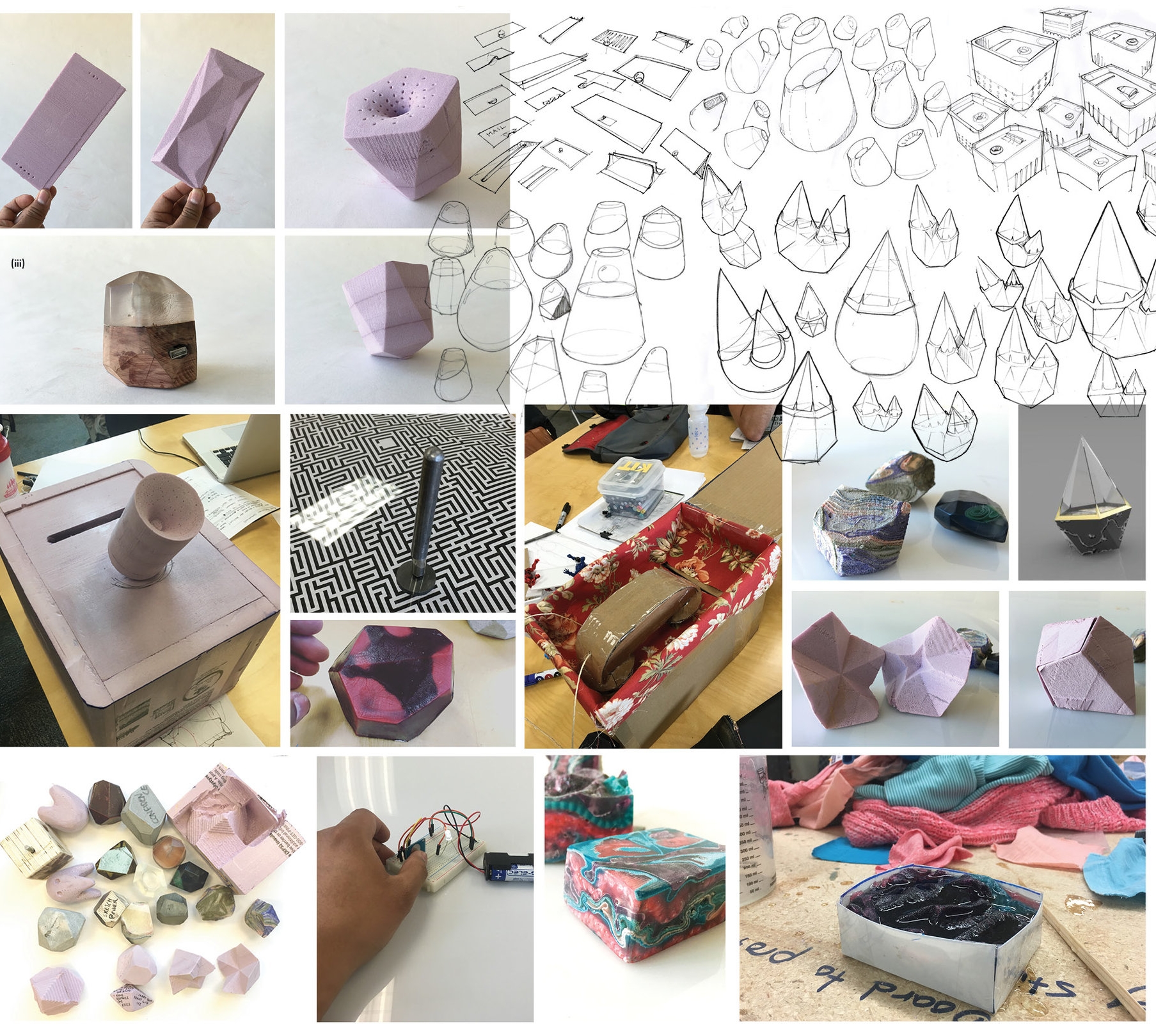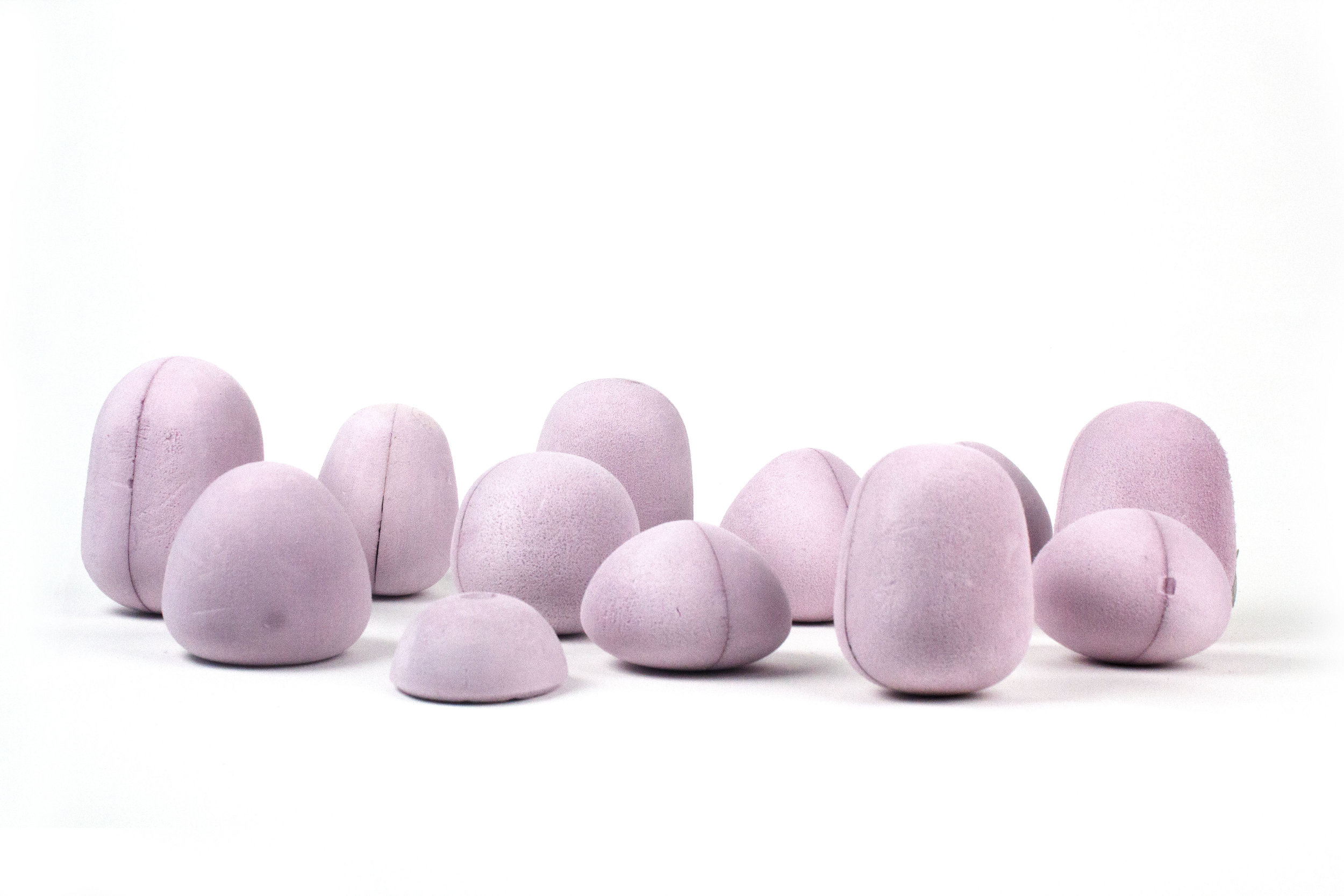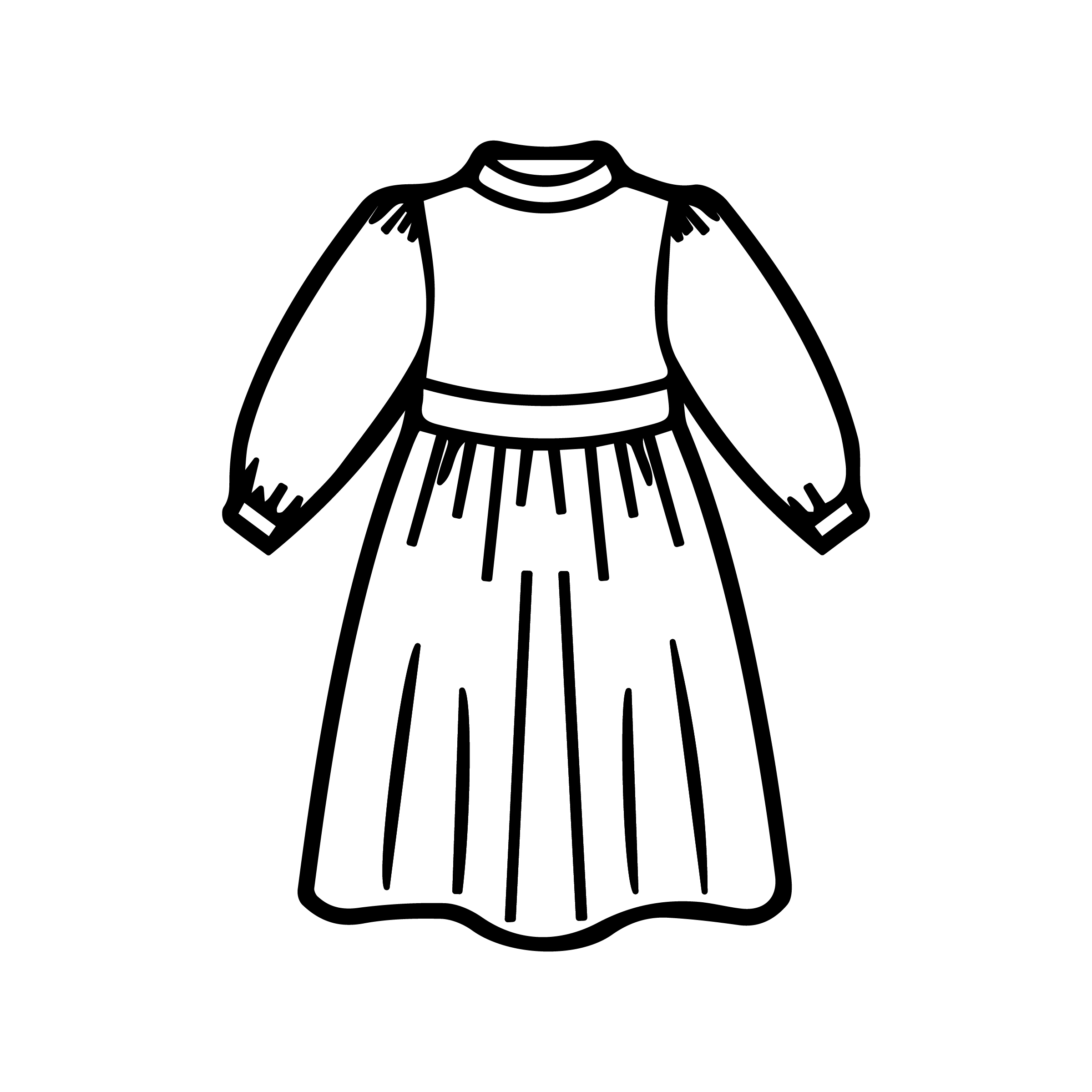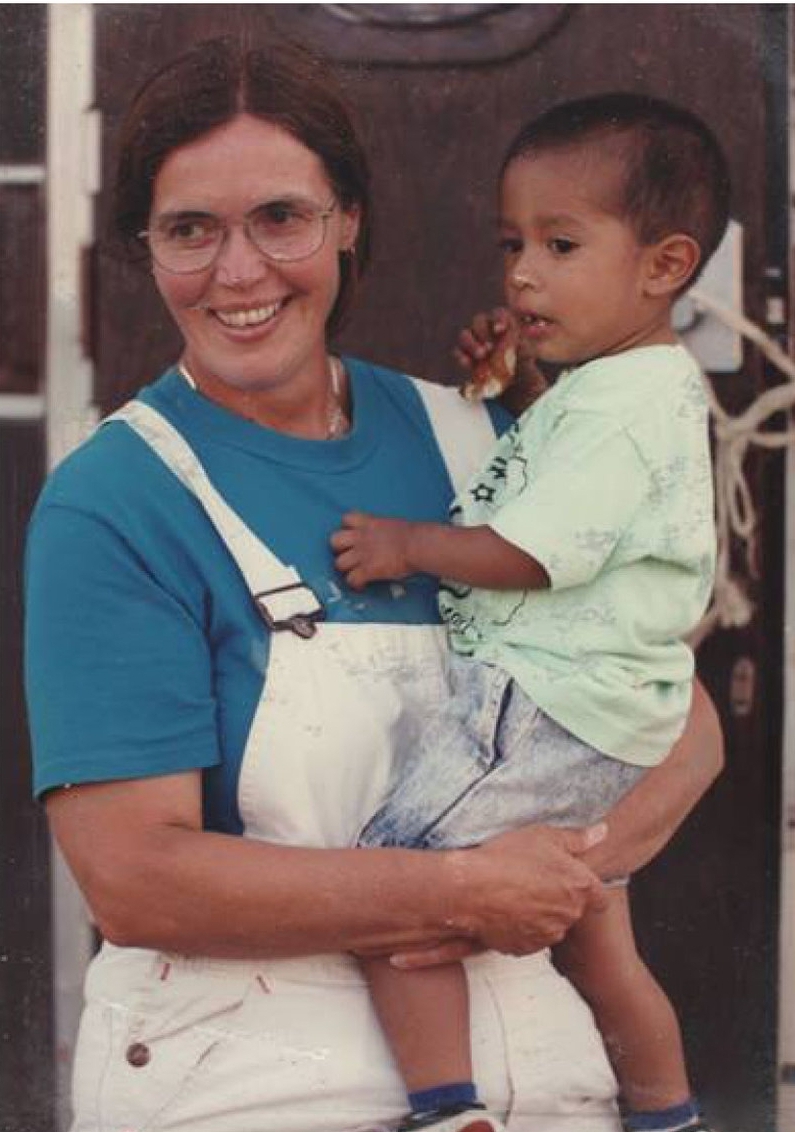Light after death
People in different cultures have, for many centuries, attributed mystical or religious powers to inanimate objects. These objects are called fetishes.
I wanted to explore how these objects can help people continue their relationships with those who have passed away.
From my research, I learned that people still continue having interactive relationships with their family members who've passed away. The top left-center images show some examples of people interactions at the grave: letters, memorials, stones, etc. I explored creating my own powerful objects too and how these objects can help these interactions.
Process and research
Key findings
No feedback
Relationships with those who have passed away are usually unidirectional. This means that we don't receive a physical response or feedback, making these interactions feel distant.
Distant interactions
Most of the interactions happen at a graveyard which means our relationships might dwindle because we don't have time to go visit them all the time.
Inanimate memorials
The objects that stand as symbols of those who have passed away tend to be inanimate and unrepresentative of who the person who passed way really was.
Explorations
Material exploration with cast resin, fabric and metallic materials. Sketch and form explorations to find a form that was both familiar and inviting to the touch.
The challenge is to create an object that would help people to continue having an interactive relationship from home with someone who has passed away.
The object will incorporate:
Feedback
Light will be the feedback medium
Interaction
The embrace will be the interaction to emulate
Symbol/Meaning
Clothes from the person passed away will be the material what will give the object meaning

